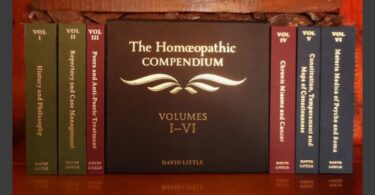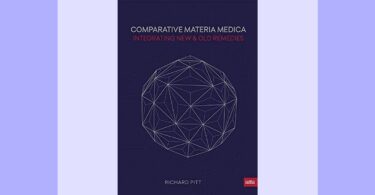
publication 2010
product no. 09654
weight: 1320g d
ISBN: 978-0-9752-0321-7
Publisher: AEN Pty Ltd
115.40 US$
Reviewed by David Johnson
As author Patricia Hatherly notes in her book’s dedication, Kent predicted milk remedies would prove to be our most important remedies. In Roger van Zandwoort’s foreword, he points out the importance of conducting provings on substances that embody a medical potential, that we already know have an impact on humans. Hatherly takes these themes to heart in “The Lacs: A Materia Medica and Repertory”, as she articulates the central role these remedies play in our lives. Her deep understanding of the milk remedies shines throughout this book, as she has carefully organized a wealth of symptoms from existing provings to provide homeopathic clinicians a very accessible, thorough, and most up-to-date reference for using these remedies in practice.

Along with lac-humanum, this book covers another nineteen remedies, indicated for times when individuals are resonating with another mammal’s life experience. Each chapter of the materia medica follows the same format and begins with a woodprint drawing of the source, as well as a listing of primary themes. For example, themes for lac lupinum (wolf) include socially isolated, trapped/loss of freedom, restless, irritable, alert, sensitive and caring. Themes for lac-felinum (cat) include tension between independence and dependence, sociable vs. unsociable, contempt for others and self-loathing, and lack of self-confidence.
Following this “foothold perspective”, past provings and dates are listed (lac lupinum provings conducted by Melissa Assilem’s in ’97 and Nancy Herrick in ’98), followed by a keynote essence (wolf: ‘I am Pariah; cast out and confined to lurk in the Shadow’). Various themes are listed (wolf: outsider/insider) along with miasmatic tendencies and explanation (wolf: sycotic, cancer, leprosy), and the more specific picture is completed with modalities, generalities, mind themes and respective physical categories of symptoms.
Within listings of mental, emotional and physical symptoms Hatherly also highlights interesting biological, cultural and sociological facts to provide further insight into the proving information. For example, in helping to explain lac lupinum’s stomach symptoms of “appetite diminished” vs. “increased hunger”, she includes Assilem’s proving observation about the ability to go long periods without food, and then eating large amounts, which has since been clinically confirmed.
Also included in the book are: Lac Asinum (ass), Lac Cameli Dromedari (camel), Lac Caninum (dog), Lac Caprinum (goat), Lac Delphinum (dolphin), Lac Equinum (horse), Lac Felinum (cat), Lac Humanum (one mother), Lac Llama Glama (llama), Lac Leoninum (lion), Lac Loxodanta Africana (African elephant), Lac Lupinum (wolf), Lac Macropi Gigantei (Eastern Grey kangaroo), Lac Maternum (many mothers), Lac Oryctolagus Cuniculus (rabbit), Lac Phoca Vitulina (seal), Lac Suillinum (pig), Lac Vaccinum (cow), Lac Vaccinum Defloratum (skimmed cow’s milk), Sus (synthesis of milk, blood, saliva and se-men of pig).
Once the possibility of a milk remedy has been determined, the second half of the book is an exhaustive 355-page repertory for differentiating between existing remedies. It begins by organizing milks according to respective miasms, and then lists numerous themes matching various milks, including the better-known feelings of mothering, abandonment, forsaken/alone, disconnection, sadness, as well as hundreds of others. Remedies matched with particular physical affinities (nervous system, digestive system, female organs, etc.) are listed next, and modalities are divided into separate groups of aggravation and amelioration. Then follows sections on Generalities, Sensations as if, and all the rest of the respective repertory chapters, i.e., Mind, Vertigo, Head, Eyes, etc.
Especially enlightening is the 65-page section on Dreams, where many of the general and specific milk symptoms come alive: lac-d: dream of an elderly and obese woman being beaten mercilessly; lac-as and lac-suis: dreams of filth / being exposed; lac-as: dreams of lowly tasks accepted as a matter of course / he would go on strike; lac-eq: dreams of being amiable to keep from being murdered; lac-oryc: dream of a man trapped in a dungeon; lac-lox-a: dream of impending evil / being helpless in the presence of evil; lac-lup: dreams pursued, no way out; and lac-mac: dreams of a rainforest / walking in the rain. Simply reading the different rubrics provides deep insights into the entire lac family, perhaps making this section alone worth the entire price of the book!
It is fitting that Roger van Zandvoort, a world-renowned expert in Materia Medica and Repertory, would give his whole-hearted recommendation to this book. Hatherly has contributed a uniquely valuable resource for recognizing this group of important remedies. Along with solidifying our knowledge of the more common lac’s, e.g,. lac-c, lac-lup, lac-eq, lac-d and lac-h, she broadens our insights with lesser-known remedies. Her book is a doorway into understanding milk energies as expressed through different mammalian experiences in our world, and is the single best resource for understanding these essential remedies. Useful as a reference, yet accessible with casual reading, “The Lacs: A Materia Medica and Repertory” is a fun, stimulating and thorough exploration of the milk remedies. With almost effortless reading it builds a solid foundation for identifying and successfully implementing these essential remedies in practice.





